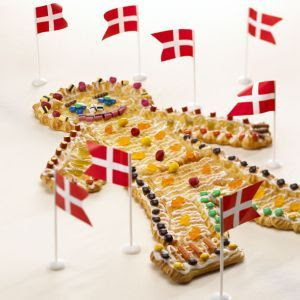In my opinion, nothing embrace and capture a woman's beauty as much as a tiara or diadem. Nomatter what materials or designs, they always make the wearer straigten up and the spectators gasp at the beauty overload.
From way back, this has been a sign of wealth and status, and with the wear of these gems is a strict etiquette. Not everyone can wear these just because they can afford them, at least not if it is an occasion where the Royals may be..
But hands up, how many of you have dreamed of wearing a tiara? Many of you, I guess, based on the popularity of tiara style hair-dos at weddings. I have, and still do! I will admit to that any day.. And luckily, quite many hair-dos actually go well with a small tiara-like accessory. I call it a tiara-like accessory since it is still quite rare to splurge hundreds or thousands on a hair-pin.
The tiaras shown here are all from the wonderful book Tiaras Past & Present by Geoffrey Munn for V&A. A most deliteful book and a source for dreams and design for quite some years now. The ones shown are all some of my favourites from the book, and the accompaning text is from the book as well.
A small diadem of diamonds arranged as a radiant sunburst. The centre can be removed and worn as a brooch.
French, c. 1900. (Wartski, London.)
A diamond fringe necklace/tiara mounted in gold and set in silver. It is pictured off the frame, set against a sheet of designs, dated July 1912, by E. Wollf & Co., manufacturing jewellers working in London. (Private Collection and E. Wollf & Co.)
A tiara in the form of five stars supported on a gallery of stylized foliage. A highly succesful tiara type, these jewels invite comparison between starshine and the scintillation of the diamond. The inclusion of stars may also allude to Shakespeare's Sonnet 116, in which he describes love as 'the star to every wandering bark'. (Private Collection.)
A wreath composed of ears of wheat in gilt metal set with yellow pastes. Ears of wheat were a popular subject for gold wreaths in Ancient Greece, and this charming example probably derives from a prototype of that period. English, c. 1830. (Private Collection. Photograph Wartski)
The famous amethysts given by Tsar Alexander I to Lady Londonderry in 1821, which were later mounted in diamond-set clusters to form a long stomacher and a tiara. The best Russian amathysts come from Siberian mines, which were then owned by the Tsar. They are said to be the finest in the world because of the red and blue highlights seen in the deep purple body colour of the stones. The stones are here shown against the original design for the tiara by E. Wollf & Co., which is dated August 1916. (The Most Hon. The Marquess of Londonderry and E. Wollf & Co.)
A gold tiara by Carlo Guiliano supporting a stylized wreath of banded agate laurel leaves and pearl berries; the front of the jewel takes the form of a rosette of similarly carved petals centring on a single pearl. London, c. 1860. (Private Collection)
A large Siberian amathyst mounted as a jewel with diamond-set honeysuckle motifs, c. 1810. At a later date it was made the centre of this amathyst and diamond tiara in the form of vine leaves that are a witty allusion to the purple stones. The word 'amathyst' derives from the Greek amethustos, literally meaning 'not drunken', referring to the belief that an amathyst placed in a glass of wine would allow one to drink without fear of intoxication. In the lore of the ancient lapidaries, the amathyst also stood for devotion in love. (The Most Hon. The Marquess of Tavistock. Photograph Wartski)
A gold tiara made to resemble the Ancient Egyptian amuletic winged globe, by Carlo and Arthur Guiliano, London, c. 1900. Set with brilliant diamonds and decorated with green enamel, the globe is represented with a star ruby. (Private Collection)
A diadem in the form of an amuletic winged globe set centrally with a citrine, by Child and Child, c. 1900. (Tadema Gallery, London)
Designs by Boucheron, c. 1890. The tiara shown in the top drawing is to be set with an opal and five rows of pearls suspended between diamond and pearl set supports, whilst the one below will bear eleven conch pearls supported on a gallery of brilliant diamonds. (Boucheron, Paris)
A platinum tiara in the form of twinned feathers tied to a diamond-set bandeau with a brilliant-cut stone of 2.5 carats. One feather is of black onyx with a diamond-set quill, the other of diamonds with an onyx quill. Most of the stones used in this highly imaginative composition have been cut especially for it. Made for stock in November 1920, it remained unsold until February 1925, when it was taken apart. (Boucheron, Paris)
A rhinstone tiara in the form of a dog's bone tied with a bow. (Vivienne Westwood)
My own personal favourite would be the second to last tiara made to look like feathers. Just beautiful, and I can just picture it set low on the forehead ala greque with a rhinestone embellished gown. Or perhaps twisted to the side if you are having a high bun hair-do. Love it..
Oh, and don't you just love the design drawings?
















































